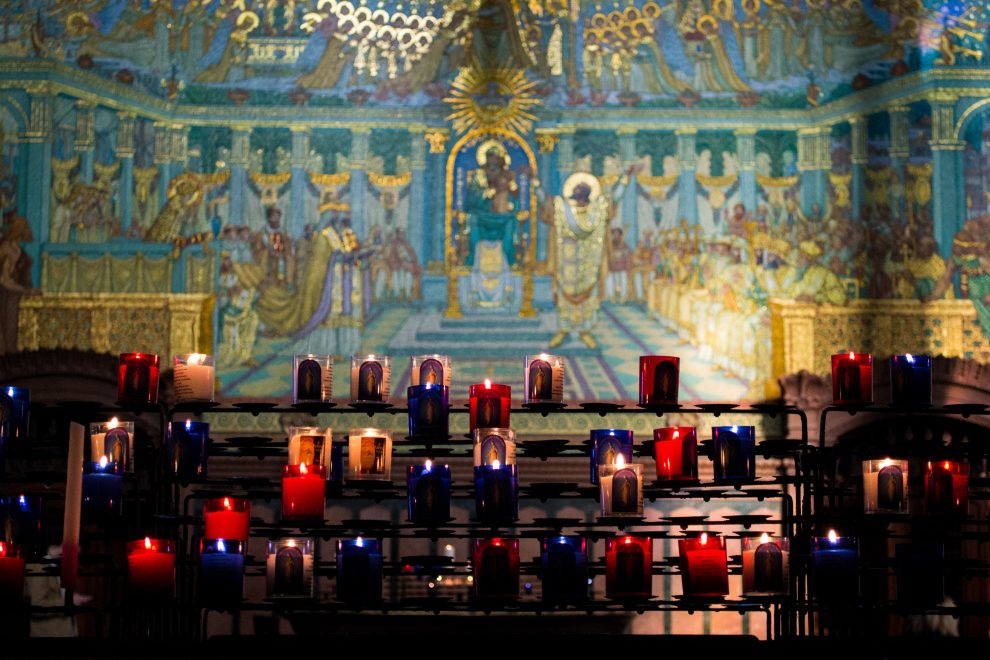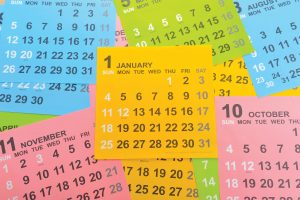Six years ago, I was at a Fourth of July party when a woman I know handed me a photocopied sheet. “I’m asking everyone to pray this novena for my fiancé’s brother, who is struggling with mental illness,” she said. “You say the prayer nine days in a row.”
I took the sheet. It had an image of a sad, Byzantine Mary, and a short prayer. “I’d be happy to,” I told her, but inside I was thinking, “Novenas? I don’t do novenas.”
As devotions go, novenas were at the bottom of my list. I’d always dismissed them as a fusty church tradition, one drenched in superstition. “What’s so great about the number nine?” I wondered. “Won’t God listen if I say the prayer eight times, or 10?” The entire concept seemed silly and arbitrary, as if the nine prayers were a spell in a fairy tale, some magic combination that would unlock God’s heart.
My reaction said more about my ignorance than about the devotion itself. Novenas, I’ve since learned, have a compelling symbolism. They recall the nine days that Mary and the apostles prayed in the upper room, preparing for the Holy Spirit. Other sources say that they represent the nine months Christ spent in Mary’s womb.
The practice itself originated in Roman times, when nine days of prayer and Masses were said for the deceased. Over the centuries, Catholics found other meaningful reasons to pray novenas. Some were offered in preparation for feast days, while others, like the novena I’d been given, requested the help of God or the intercession of the saints.
That July evening as I dutifully began the novena I had been given to pray, my heart just wasn’t in it. The language was archaic and flowery; it felt odd on my lips. But as the days passed, I realized that something was happening. I’ve always had a hard time remembering to pray for others; after a day or two, the intentions would slide out of my mind. With the novena I didn’t forget. I said the prayer once, and then I went back eight more times. “Hmm,” I thought. “Maybe this isn’t so silly after all.”
Since then, I’ve prayed several novenas, and I’ve come to value their steady structure and unique rhythm. I always start off strong, full of zeal. Around day four, I get bored, but I keep on plugging. By day nine I’ve broken through the monotony and recovered the beauty of prayer.
Even better, I end up with a deeper connection to the person I’ve been praying for. They’ve been in my heart long enough to create a bond.
I’ve also learned the power of being on the receiving end of novenas. A few years ago, I suffered a devastating miscarriage. I was in the middle of researching a book, and I confided my loss to one of the contributors, a woman I’d met only once. She sent me an e-mail suggesting that together we pray a novena to St. Anne, the patron saint of infertility.
I was moved to tears that this almost-stranger would make such a commitment to me. So for nine nights, she prayed in New Jersey and I prayed in California, a comforting lifeline in a very dark time.
Six months later, I was pregnant again, and terrified of another loss. It was excruciating to wait for the ultrasound that would reveal either life or death inside me. I found a novena to the Holy Family, a beautiful one with simple language, and my husband and I prayed it for the nine nights leading up to my appointment. The routine soothed me; it felt good to be a part of something sturdy and ancient and bigger than my fear.
And on the tenth day, the ultrasound showed us the most beautiful thing ever: a strong, steady heartbeat. That very night, we began the novena all over again, this time as a prayer of thanksgiving for our baby’s life.
As I write this, that baby is napping in his crib. He’s a happy, inquisitive fellow who was born in September, the ninth month. I have a hunch he may grow up to be like me, full of questions about his faith. Maybe someday he’ll ask why I pray these strange things called novenas. If he does, I’ve got my answer all ready.
I’ll tell him that nine isn’t a magic number that unlocks God’s heart. It’s the number that opens mine.
This article appeared on the may 2008 issue of U.S. Catholic (Vol. 73, No. 5, pages 37-38).
Photo by Diogo Nunes on Unsplash













Add comment